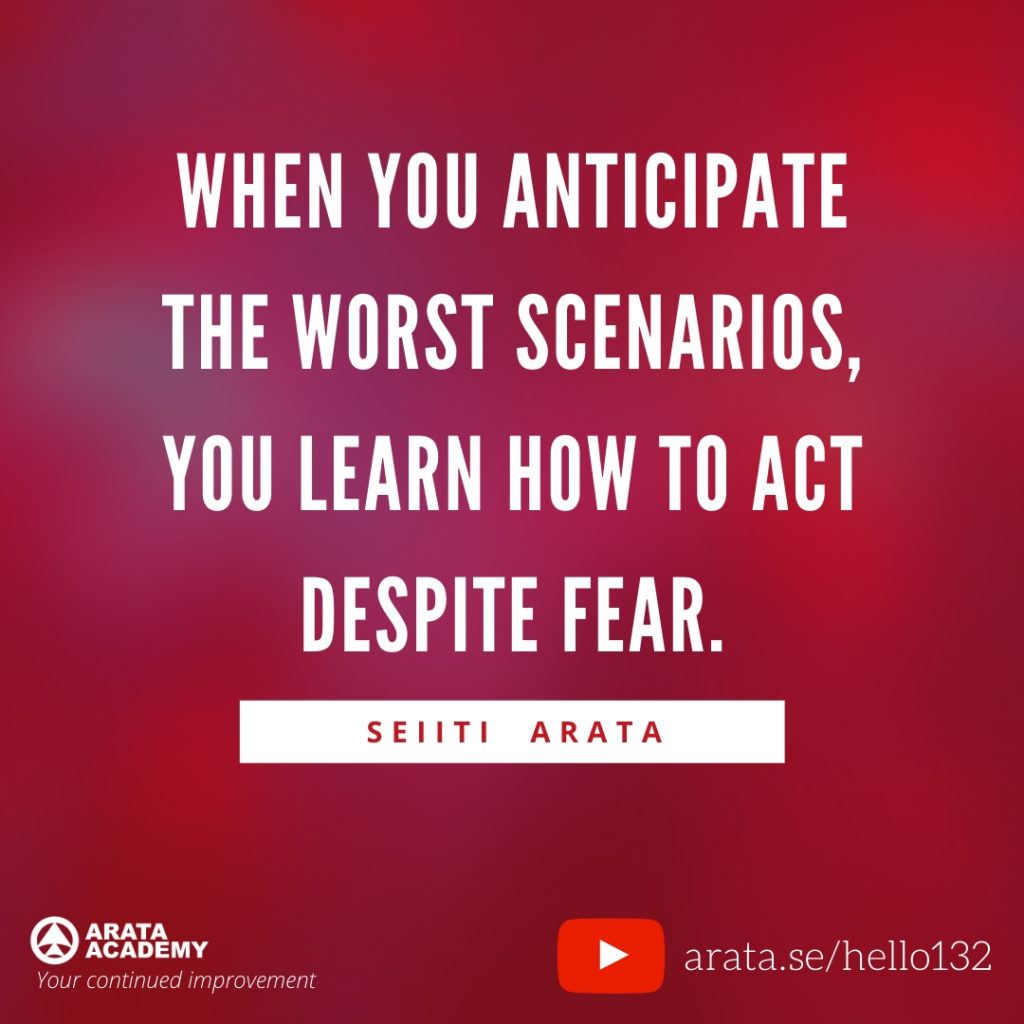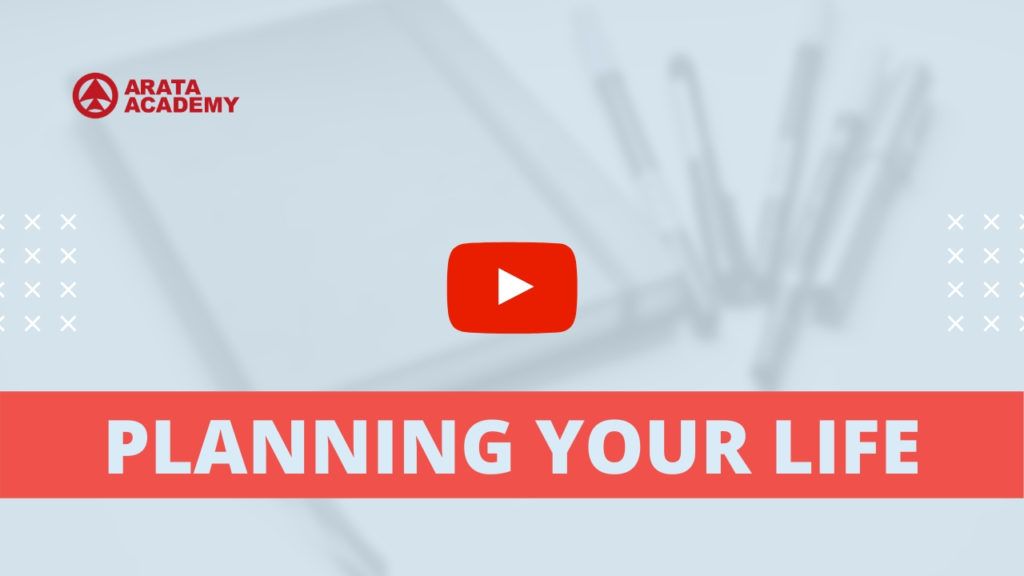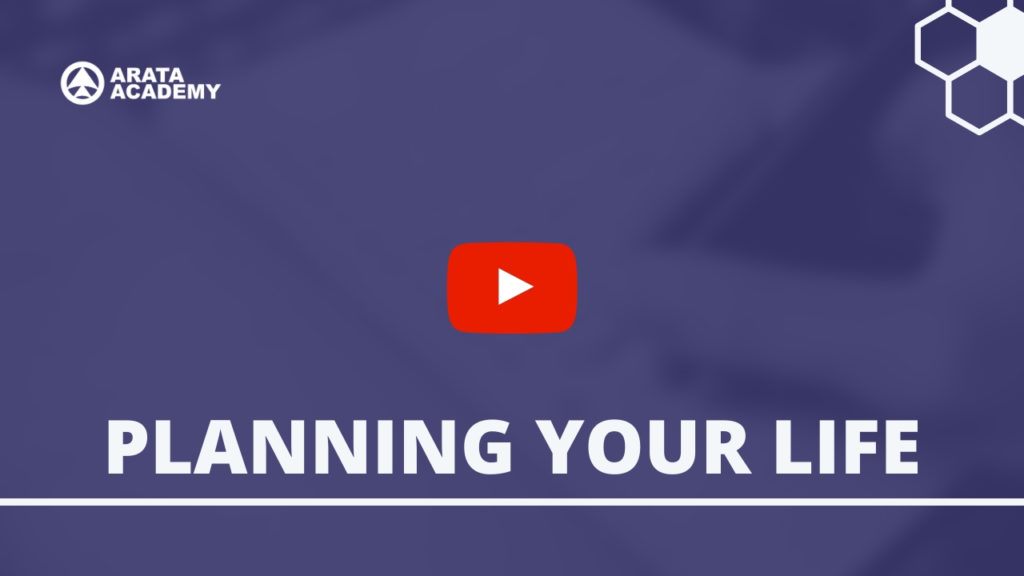Hello! Seiiti Arata. Want to know how to overcome fear once and for all? Well … unfortunately, eliminating fear completely is impossible. Fear is part of human nature itself.
Instead of trying to eliminate fear, you have to learn to deal with it. What you need to do is learn to act despite fear.
Fear is a natural response from our body depending on our perception of certain conditions. Fear is meant to help defend us.
How to act despite fear? Use worst case technique
To act despite fear, there is a technique called Fear-Setting. It is a technique that was popularized by Tim Ferriss from Seneca teachings.
Seneca spoke about the importance of thinking ahead about the worst that could happen to our lives.
Being clear about your fears is essential to understanding your emotions. When you gain clarity about your fears, you can act despite fear.

Understood? The problem is not that you are afraid. The problem is that you are afraid of situations that you would not need to be afraid of. This happens when you are not clear enough.
We suffer more from the fears that exist in our minds than with the real dangers life presents us. Think about the huge amount of problems that you have already faced in your imagination, but that never really happened.
It is necessary to distinguish what you can control and what is beyond your control. And focus only on what we can control.
Let’s face the fear? You should analyze and describe in detail the worst case scenarios. What are the things you are most afraid of in life? What fears are preventing you from taking action to achieve your biggest goals?
Let’s reason logically. Faced with a situation you are afraid of, there are only three possible choices. You can act and fail, you can act and succeed, and you can choose not to act.
Let’s now continue with three simple steps.
Step 1: What if I act and fail?
In this first step, we will gain clarity about failure in the face of the fearful situation. You should draw three columns on a piece of paper and define in the first column your ten biggest fears, the ten worst things that could happen in your life.
In the second column, write down the ten ways to prevent each of these top ten fears. You must answer the question “What can I do to prevent these scenarios from happening or make them less likely to happen?”
Then, in the third column, write down the ten ways to fix each of these top ten fears if they happen. To that end, answer the question “If the worst case scenario happens, what can I do to repair the damage? What can I do to make things better? Who can I ask for help?”

I will give you a practical example. Let’s say you are afraid of being unemployed. Write this in the first column.
In the second column, write what you could do to avoid becoming unemployed. You can commit to always improving yourself by taking courses and investing in your personal and professional development. You can learn relationship skills to get along with your boss and co-workers. You can strive to be a valuable asset to the company you work for.
Then, in the third column, write what you would need to do if you were really unemployed. You may need to use your emergency reserves while getting another job. You may need to distribute resumes. You may need to start your own business or work freelance.
The important thing about this first step is to see what are the worst possible scenarios. It gives you clarity that the world will not end even if your biggest fears come true.
With this, you can now move to the second step, which is clarity about the scenario of success in the face of fear.
Step 2: What if I act and it works?
The second step is to answer the following question: “If I act in spite of fear, what can be the benefits? What if it works? What if it partially works?”
This second step gives us clarity about what the benefits can be if we are minimally successful in our attempt to act despite fear. That is, if you take action even scared to death, what happens if things go well?

Think hard to answer this second step. Ideally, you should spend at least ten to fifteen minutes formulating your answer.
The first step gives us clarity about the worst scenarios. This second step shows us the bright side, which can be a positive thing if you start acting even if you’re afraid.
Remember that in any situation that frightens you, there are only three possibilities: you can fail, you can succeed, and you can do nothing. So now let’s go to the third step.
Step 3: What if I don’t act?
The third and final step is called “The Cost of Doing Nothing.”
Here you must write what will cost you emotionally, physically and even financially if you become paralyzed and do not take action.
First, write what inaction will cost you in the next six months. Then in a year. And finally, what could happen three years from now if you don’t take action out of fear.
We are good at imagining what can go wrong if we try to do something. But few of us can think exactly what might happen if we do NOT do anything.
For example, what will it cost your health if you do not exercise for the next six months? What will it cost within a year? And within three years?
Every decision we make, whether we do it or not, has a cost. The third step aims to make clear what that cost is.
Ideally, you should do this exercise at least once every three months. This is how you will be clear about what is stopping you and understand how to act despite fear.
Set up an action plan to act despite fear
Fear is an ally, a component that has helped us evolve and avoid unnecessary dangers. Most of our fears exist only in our mind, which unnecessarily amplifies fears for lack of clarity.
So we have learned a hands-on exercise to define the worst case scenarios, anticipating in writing everything we can do to prevent or repair these fears.
What we have left now is to take action. And for that we need a life plan, a step by step to act despite the fear.

This life plan must contain everything from your biggest and most abstract dreams to the next practical step you need to take to make those dreams come true, even if you have to act despite fear.
One of the first components of this life plan should be a hierarchical list of your most important personal values.
With your values clearly, you will have an easier time acting despite fear.
I have prepared a special Planning Your Life class with techniques on how you can discover your values to clearly analyze the cost of doing nothing, the cost of being paralyzed by fear.
You can watch this special class right now by visiting https://arata.se/planningyourlife

